The modern supply chain is defined by volatility. One day, a key port closes. The next, a new trend on social media doubles demand overnight. Traditional, reactive methods for supply chain management are no longer sufficient. They are breaking under the pressure of this constant change.
We must define Artificial Intelligence (AI) in the context of supply chain management. This is not simple automation, like a machine on an assembly line that just repeats one task. AI introduces cognitive capabilities. This means it can learn, it can predict, and it can self-correct. In short, AI thinks.
The primary function of AI in supply chain management is to transform your raw data into predictive, actionable insights. Data integrity is the foundation; AI is the intelligence that builds the house. This article will analyze the core applications of AI in supply chain management. We will move from the foundational uses businesses rely on today to the future trends that will shape the next decade. This provides a clear framework for any small business looking to optimize its supply chain management.
Applications of AI in Supply Chain Management

The impact of AI is not a single event. It is a series of focused improvements across the entire chain. Effective supply chain management relies on many moving parts working together. These parts include planning, buying materials, storing products, and delivering them.
When AI is applied to these individual parts, the whole system becomes smarter, faster, and stronger. It becomes more resilient. Let’s examine the most critical applications of AI in supply chain management that businesses are using right now to gain a competitive edge.
These powerful tools are no longer just for massive corporations. They are becoming essential for any business, large or small, that wants to control its inventory and logistics. Good supply chain management starts with good data. AI is the best tool we have for understanding that data and making smart decisions.
1. Predictive Demand Forecasting & Inventory Optimization
The Problem: The biggest challenge in all of supply chain management is knowing what to buy and when to buy it. This is called demand forecasting. When your forecast is wrong, it creates a massive problem called the “bullwhip effect.”
Imagine cracking a whip. A small flick of your wrist (a small change in customer demand) becomes a huge, violent snap at the end of the whip (your panicked order to your supplier). In business, this means you either have a warehouse full of products nobody wants (overstocking) or empty shelves when customers are ready to buy (stockouts).
Both of these outcomes are disastrous for a small business. Overstocking ties up your cash in dead inventory. Stockouts lose you a sale and damage your customer’s loyalty. Poor forecasting is the root of poor supply chain management.
The AI Application: This is one of the most valuable applications of AI in supply chain management. AI uses a technology called Machine Learning (ML). An ML algorithm is a computer program that learns from data. It can analyze massive, complex datasets that no human or simple spreadsheet could ever handle.
It looks at your past sales, yes. But it also analyzes hundreds of other variables. It looks at market trends, upcoming holidays, local events, weather patterns, and even the sentiment of social media posts. It finds hidden patterns. For example, an AI might learn that a rainy forecast in a specific city leads to a 10% spike in online orders for your product three days later. This level of detail makes its demand predictions incredibly accurate.
The Value: The business value is immediate. With accurate forecasts, you can optimize your inventory. This means you stop wasting cash on products that just sit on a shelf. This frees up your cash flow for marketing, hiring, or other growth areas. It also drastically reduces stockouts, which keeps your customers happy and loyal. Good inventory control is the core of profitable supply chain management.
Companies like Amazon and Walmart have built entire empires on this principle. They use AI-driven supply chain management to predict what you will buy, often before you even know you want it. This level of optimization is a key goal for any modern supply chain management strategy.
2. Intelligent Warehouse Automation & Management
The Problem: The warehouse is the physical heart of your supply chain management. It is where your products are stored, sorted, and packed. Traditionally, it is also the most human-dependent part of the operation.
People must walk (often many miles a day) to “pick” items from shelves. They pack them into boxes and sort them for shipping. This work is labor-intensive, repetitive, and unfortunately, prone to human error. Shipping the wrong item (a “mispick”) costs a business a lot of money in returns and labor. It also damages customer trust. As order volumes grow, scaling a manual warehouse operation becomes a major bottleneck for your supply chain management.
The AI Application: AI makes the warehouse “intelligent.” It does this in a few key ways:
- Robotics: You may have seen videos of Autonomous Mobile Robots (AMRs). These are not dumb robots. They are powered by AI. Instead of a worker walking to a shelf, an AMR brings the correct shelf to the worker. This is called a “goods-to-person” system. Amazon famously bought a robotics company called Kiva Systems to dominate this area. This is a clear, physical application of AI in supply chain management.
- Computer Vision: This is AI that “sees.” Cameras mounted over packing stations can use AI to verify the contents of every box in real-time. They can instantly spot a mistake, like if a red shirt was packed instead of a blue one. AI can also inspect goods for quality control, finding tiny defects a human eye might miss.
- Optimization & Slotting: AI can design the physical layout of your warehouse. It analyzes which products are most frequently ordered together. It then tells you to place those items near each other and close to the packing station. This is called “slotting.” It minimizes the travel time for every single order. This is just plain smart supply chain management.
The Value: The results are clear and easy to measure. You get higher throughput, which means more orders are shipped per hour. You get near-perfect order accuracy, which improves customer satisfaction. It also creates a safer work environment. This automation allows a business to handle “peak season” (like the holidays) without collapsing. DHL, a global logistics leader, uses AI and robotics (like Gather AI‘s inventory drones) to make its warehouses models of efficiency. This level of automation is a critical part of modern supply chain management.
3. AI-Driven Logistics & Route Optimization
The Problem: Logistics is the part of supply chain management that moves your goods from point A to point B. It is extremely expensive. Fuel costs, driver salaries, and vehicle maintenance add up quickly.
The most complex and costly part is often the last-mile delivery. This is that final step from a local hub or store to the customer’s doorstep. A human planner might create a “static” route for a driver in the morning. But that route becomes inefficient the moment a traffic jam, road closure, or accident occurs. Inefficient routing wastes fuel, time, and customer patience.
The AI Application: AI performs dynamic route optimization. “Dynamic” means it changes in real-time. An AI model analyzes all the variables at once. It looks at every delivery address on the truck, the priority of each package, the vehicle’s capacity, current traffic patterns, and even weather forecasts.
It doesn’t just find the shortest route; it finds the smartest route. If a major accident happens, the AI instantly re-routes all affected drivers to the next best path. This is one of the most practical and widely used applications of AI in supply chain management.
The Value: The value is measured in saved dollars and satisfied customers. Companies that use this technology report significant drops in fuel consumption, which is both a cost saving and a “green” benefit. More importantly, it dramatically improves on-time delivery rates. This allows you to provide customers with highly accurate Estimated Times of Arrival (ETAs).
Global shippers like FedEx and UPS live and die by this technology. Even sea freight companies, like Maersk, use AI (like its “Captain Peter” tool) to optimize routes across entire oceans. Visibility platforms like FourKites use AI to give companies a real-time map of their entire supply chain management network.
4. Automated Procurement & Supplier Risk Management
The Problem: Procurement is the “buying” part of supply chain management. It involves finding suppliers, negotiating prices, and signing contracts. Traditionally, this is a slow, manual process built on relationships and spreadsheets.
But what if your most important supplier is in a region about to face a natural disaster? What if a supplier is financially unstable and could go bankrupt? Identifying these risks before they happen is nearly impossible for a human. A weak link in your supplier base can bring your entire supply chain management to a halt.
The AI Application: AI brings data science to procurement and sourcing.
- Natural Language Processing (NLP): This is a type of AI that understands human language. You can feed an AI model thousands of your supplier contracts. The AI will read and analyze all of them in minutes. It can instantly flag risky clauses, renewal dates, and non-compliance issues that a team of lawyers might take weeks to find.
- Risk Scoring: This is where supply chain management gets truly predictive. An ML model can scan news articles, financial reports, weather data, and even port traffic. It combines this public data with a supplier’s past performance (like on-time delivery rates). It then assigns a dynamic “risk score” to every supplier in your network. The system can alert you months in advance that a key supplier is becoming a high risk.
The Value: This application of AI shifts your supply chain management from reactive to proactive. You get alerts before a problem happens, giving you time to find an alternate supplier. This builds resilience. You get better supply chain visibility into who you depend on. Software platforms like Coupa and insights from IBM‘s AI research show that data-driven procurement is a massive competitive advantage. It’s a core function of intelligent supply chain management.
5. Predictive Maintenance for Fleet & Machinery
The Problem: Your supply chain management depends on physical things: delivery trucks, warehouse conveyor belts, and manufacturing equipment. When one of these critical assets breaks down unexpectedly, your entire operation can stop.
A truck stuck on the side of the road is a truck full of late deliveries. A broken conveyor belt means a warehouse full of workers who cannot pack orders. Traditional maintenance is “reactive” (fix it when it breaks) or “preventative” (fix it every 10,000 miles). Both of these methods are inefficient and costly.
The AI Application: AI enables predictive maintenance. This is one of the most brilliant applications of AI in supply chain management. It works by combining two technologies:
- Internet of Things (IoT): These are small, inexpensive sensors placed on the equipment. They measure things like vibration, temperature, and performance in real-time.
- Machine Learning (ML): All that sensor data is fed to an ML model. The model learns the normal operating signature of that specific engine or motor. It can then detect tiny, invisible changes in vibration or temperature that signal a component is about to fail.
The Value: The AI can send an alert: “Truck #5’s alternator will likely fail in the next 72 hours.” This allows you to schedule maintenance before the breakdown occurs. This maximizes “uptime” (the time your equipment is working). It eliminates the cost and chaos of unexpected breakdowns and extends the life of your expensive assets. Industrial giants like General Electric (GE) and Siemens use this technology on everything from jet engines to factory machines. It is a critical component of robust supply chain management.
Benefits vs. Challenges of AI in SCM

When business owners research applications of AI in supply chain management, they are really asking two simple questions: What are the benefits, and what are the barriers? The decision to invest in AI for your supply chain management requires a clear, data-driven analysis of the pros and cons.
Quantifiable Benefits of AI Adoption
The benefits of integrating AI into your supply chain management are not theoretical. They are measurable and directly impact your bottom line.
- Enhanced Efficiency: AI automates the most repetitive, data-heavy tasks. Think of forecasting, data entry, and order verification. This frees your human employees to focus on strategic work, like building supplier relationships or improving customer service, rather than just managing spreadsheets. This is a core goal of supply chain management innovation.
- Cost Reduction: This is often the primary driver for adoption. AI-driven route optimization cuts fuel costs. Predictive maintenance cuts repair costs. Optimized inventory cuts holding costs. Every application we discussed is designed to stop waste and save money. This makes your entire supply chain management operation leaner and more profitable.
- Improved Resilience: A resilient supply chain management system can bend without breaking. AI provides this resilience. By predicting disruptions (like a supplier risk, a port closure, or a shipping delay), AI gives you time to react. You can pivot to a backup plan before the crisis hits, ensuring your business stays open.
- Greater Visibility: Many businesses suffer from “siloed” data. Their warehouse data (WMS), their shipping data (TMS), and their order data (ERP) are all in different, unconnected systems. AI is the “brain” that can connect all of them. It synthesizes this data into a single, intelligent view (often called a “dashboard” or “digital twin”), giving you true end-to-end visibility of your supply chain management.
- Enhanced Customer Satisfaction: This is the ultimate result of good supply chain management. When AI is working, customers get more accurate delivery times (ETAs).64 They get their orders on time, and the orders are correct. This “on-time-in-full” (OTIF) rate is a key metric in logistics, and AI directly improves it, building the customer loyalty that every business needs. This is the top-level goal of any supply chain management system.
Common Barriers to Implementation
While the benefits are clear, implementing AI in supply chain management is not as simple as buying a piece of software. There are significant challenges, especially for small businesses.
- Data Quality and Integration: This is the single biggest barrier. As an expert, I must be direct: AI is only as competent as the data you feed it. If your data is “unclean” (full of errors, duplicates, or missing fields) or “siloed” (stuck in old, unconnected systems), your AI model will fail. You must prioritize data integrity before you implement AI. This is the foundation of all digital supply chain management.
- High Initial Cost & ROI: Implementing AI is an investment. It requires new software, potential hardware (like sensors or robots), and specialized talent. For a small business, this cost can be high. The challenge is proving the Return on Investment (ROI). You must clearly track your “before” metrics (like fuel costs or error rates) to prove the “after” value.
- The Skills Gap: This is a major hurdle. You cannot just “set it and forget it.” You need people who understand the data and can manage the AI systems. Data scientists and AI-literate managers are in high demand and can be expensive. Without this talent, you risk investing in a powerful tool that nobody knows how to use. This is a common failure point in supply chain management projects.
- Algorithm Transparency: This is often called the “black box” problem. Sometimes, an AI will make a recommendation (like “Order 5,000 units from this new supplier”) and it’s not clear why. This can lead to a lack of trust from experienced managers who are used to making decisions based on “gut feeling.” Good AI systems must be “explainable” so that humans can understand and validate their decisions.
- Security & Data Privacy: Your supply chain management data is incredibly sensitive. It includes your customer lists, your pricing, and your supplier information. Using AI, especially cloud-based systems, opens up new security risks. You must ensure your AI partners have robust security protocols to protect this proprietary data.
The Future of AI in Supply Chain Management

The applications of AI in supply chain management we’ve discussed are already in use. But the technology is moving at an incredible pace. The next five to ten years will bring even more transformative changes. This is where supply chain management evolves from being a “cost center” to a true strategic advantage for a business.
The Rise of Generative AI (GenAI) & AI Copilots
You have probably heard of Generative AI models like ChatGPT. This technology is now entering the world of professional supply chain management.
The Concept: Instead of looking at complex dashboards and spreadsheets, a manager will be able to talk to their supply chain management software. This is the “AI Copilot” model. A manager can type a simple, natural language question, like:
“What is the projected impact of the Hamburg port strike on my Q4 orders for SKU #123?”
The AI Copilot (like those being developed by Microsoft) will instantly analyze shipping data, inventory levels, and supplier locations. It will then provide a clear, synthesized answer in plain English: “The strike will delay 40% of your Q4 orders by an estimated 12-15 days. To avoid stockouts, I recommend sourcing 500 units from your alternate supplier in Poland.” This makes powerful data analysis accessible to everyone, not just data scientists. This will revolutionize the day-to-day practice of supply chain management.
Autonomous Systems & “Self-Healing” Supply Chains
The future of supply chain management is autonomy. Today, most AI is predictive (it tells you a problem is coming) or prescriptive (it tells you what to do). The next step is autonomous.
The Concept: An autonomous, or “self-healing,” supply chain management system will not just flag a disruption; it will fix it automatically, in real-time.
Imagine this scenario: An AI detects that a key supplier’s factory just had a fire. Within seconds, the AI:
- Pauses all new orders to that supplier.
- Calculates the inventory impact.
- Automatically places new, smaller orders with two pre-approved backup suppliers.
- Re-routes all in-transit shipments to a different distribution center.
- Updates the inventory and delivery dates on the company’s website.
The human manager simply gets a summary report of the problem and the solution. This is the “holy grail” of supply chain management: a system that anticipates and solves its own problems in real-time.73 This also includes autonomous vehicles and last-mile delivery drones physically executing the AI’s decisions, creating a truly automated supply chain management loop.74
Digital Twins & Hyper-Personalization
The Concept: A Digital Twin is a living, real-time, 1-to-1 virtual copy of your entire supply chain management operation. It’s a simulation that is connected to your real-world data. It shows every truck, every warehouse, and every piece of inventory in a virtual space.
This allows managers to run “what-if” scenarios in a completely risk-free environment. Before making a big decision, you can ask the Digital Twin:
- “What happens if we close our Chicago warehouse and move it to Nashville?”
- “What happens if we switch from trucks to rail for our West Coast shipments?”
The AI will run the simulation and show you the precise impact on costs, delivery times, and risks. This ability to model the future is a powerful new tool for strategic supply chain management. It also enables hyper-personalization, allowing a company to customize its supply chain management to meet the specific needs of a single, large customer.75
AI-Driven Sustainability & Green Logistics

Consumers and investors are increasingly demanding that businesses be environmentally responsible. This has become a new, critical part of supply chain management.
The Concept: AI is the single best tool for making supply chain management “green.”
- Carbon Footprint: AI-driven route optimization, by its very nature, reduces fuel consumption and, therefore, your carbon footprint.
- ESG Tracking: AI can scan your supplier network to track ESG (Environmental, Social, and Governance) compliance. It can flag suppliers who are using unethical labor practices or violating environmental regulations.
- Circular Supply Chains: AI can help manage a “circular” supply chain, which involves returns, recycling, and refurbishing products. This is an incredibly complex logistics challenge that AI is perfectly suited to manage.
Soon, Blockchain technology (a secure, unchangeable digital ledger) will be paired with AI to provide perfect, verifiable traceability for products, proving to consumers that a product is truly “organic” or “ethically sourced.” This transparency is the future of responsible supply chain management.
Conclusion: From Reactive to Predictive
The applications of AI in supply chain management are not futuristic concepts. They are a current competitive necessity. As we have seen, AI is being applied to every single link in the chain: from forecasting demand to automating warehouses, from optimizing delivery routes to managing supplier risk.
The core objective for any small business is to leverage these applications to build a competent, resilient, and efficient operation. You must first ensure your data integrity, as this is the fuel for all AI. The final thought is this: AI moves your entire supply chain management model from being reactive (putting out fires) to being predictive (preventing the fires from starting). This is the most significant shift in business operations in decades.
Call to Action
To optimize your business’s data, improve your digital footprint, and build a strategy for integrating AI into your supply chain management, contact WebHeads United for a strategic consultation.






